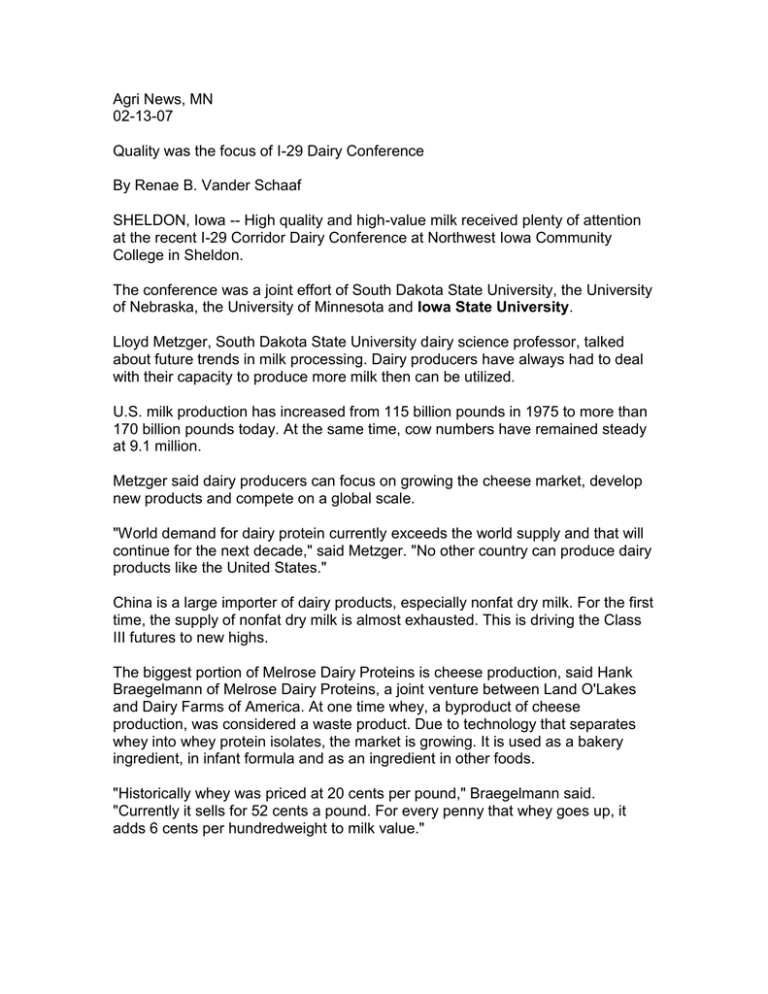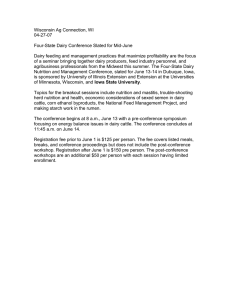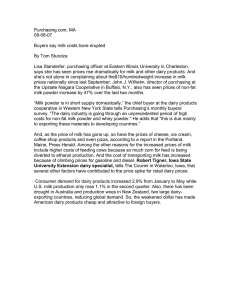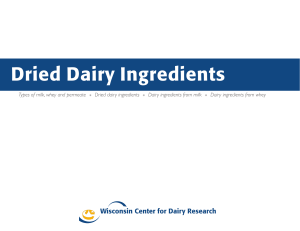Agri News, MN 02-13-07 Renae B. Vander Schaaf
advertisement

Agri News, MN 02-13-07 Quality was the focus of I-29 Dairy Conference By Renae B. Vander Schaaf SHELDON, Iowa -- High quality and high-value milk received plenty of attention at the recent I-29 Corridor Dairy Conference at Northwest Iowa Community College in Sheldon. The conference was a joint effort of South Dakota State University, the University of Nebraska, the University of Minnesota and Iowa State University. Lloyd Metzger, South Dakota State University dairy science professor, talked about future trends in milk processing. Dairy producers have always had to deal with their capacity to produce more milk then can be utilized. U.S. milk production has increased from 115 billion pounds in 1975 to more than 170 billion pounds today. At the same time, cow numbers have remained steady at 9.1 million. Metzger said dairy producers can focus on growing the cheese market, develop new products and compete on a global scale. "World demand for dairy protein currently exceeds the world supply and that will continue for the next decade," said Metzger. "No other country can produce dairy products like the United States." China is a large importer of dairy products, especially nonfat dry milk. For the first time, the supply of nonfat dry milk is almost exhausted. This is driving the Class III futures to new highs. The biggest portion of Melrose Dairy Proteins is cheese production, said Hank Braegelmann of Melrose Dairy Proteins, a joint venture between Land O'Lakes and Dairy Farms of America. At one time whey, a byproduct of cheese production, was considered a waste product. Due to technology that separates whey into whey protein isolates, the market is growing. It is used as a bakery ingredient, in infant formula and as an ingredient in other foods. "Historically whey was priced at 20 cents per pound," Braegelmann said. "Currently it sells for 52 cents a pound. For every penny that whey goes up, it adds 6 cents per hundredweight to milk value." Adding value to dairy products through balancing rations for amino acids was the challenge given by Rick Lundquist, Lundquist & Associates of Duluth, Minn. He works with dairies all over the country. "The goals of a properly balanced ration protein should provide more yield and more efficient production of milk protein," Lundquist said. "You want to do this at the lowest feed cost possible. Crude protein must be enhanced with energy/carbohydrates to enhance production and health yet at the same time reduce environmental nitrogen."






